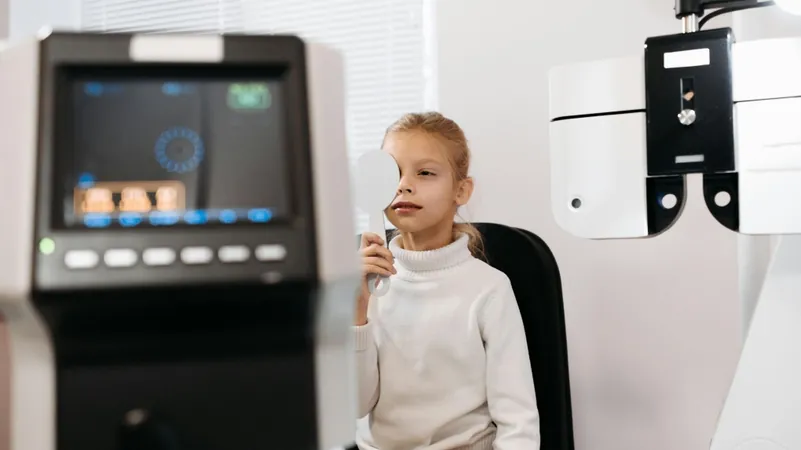
Alarming Surge in Childhood Nearsightedness: What Every Parent Needs to Know
2025-01-07
Author: Sophie
If your child has recently started wearing glasses, they're far from alone. Just ask four-year-old Isadora, who arrived at the University of Waterloo School of Optometry & Vision Science for her eye exam. According to her father, Brad, Isadora has worn glasses since her early childhood.
However, what's concerning is the rising trend of children needing glasses, and it’s not simply a case of fashion. Groundbreaking research published in the British Journal of Ophthalmology reveals that myopia, or nearsightedness, among children and teens is skyrocketing globally, having tripled in prevalence over the last 30 years.
"Myopia is characterized by difficulty seeing distant objects clearly, while close-up vision remains unaffected," explained Lisa Christian, an associate clinical professor at the School of Optometry. Disturbingly, one in three children worldwide is now affected by nearsightedness, with a notable spike observed between 2020 and 2023.
"While genetics can play a role, the dramatic rise in cases between 2020 and 2023 must be tied to other factors," Christian emphasized. "During this period, the COVID-19 pandemic forced kids indoors, significantly altering their daily habits." As families hunkered down and education moved online, outdoor playtime diminished, which is crucial for healthy eye development.
The lack of exposure to natural sunlight is particularly harmful. "Studies show that inadequate outdoor activity can lead to elongation of the eye, a key factor in developing nearsightedness," Christian warned. This condition, if left unchecked, can lead to severe complications such as myopic maculopathy, retinal detachment, glaucoma, and cataracts—each a potential cause of visual impairment.
Since myopia typically develops during childhood and is irreversible, professionals stress the importance of annual eye exams for kids. "Early detection and management are crucial to slowing the progression of nearsightedness," said Christian.
The implications are staggering: at the current trajectory, experts predict that by mid-century, nearly 50% of the global population could be living with myopia. This projection should serve as a wake-up call for parents everywhere.
In light of these alarming statistics, parents are urged to encourage their children to spend more time outdoors engaging in physical activities, reducing screen time, and developing healthy eye habits. Your child’s vision may depend on it!



 Brasil (PT)
Brasil (PT)
 Canada (EN)
Canada (EN)
 Chile (ES)
Chile (ES)
 Česko (CS)
Česko (CS)
 대한민국 (KO)
대한민국 (KO)
 España (ES)
España (ES)
 France (FR)
France (FR)
 Hong Kong (EN)
Hong Kong (EN)
 Italia (IT)
Italia (IT)
 日本 (JA)
日本 (JA)
 Magyarország (HU)
Magyarország (HU)
 Norge (NO)
Norge (NO)
 Polska (PL)
Polska (PL)
 Schweiz (DE)
Schweiz (DE)
 Singapore (EN)
Singapore (EN)
 Sverige (SV)
Sverige (SV)
 Suomi (FI)
Suomi (FI)
 Türkiye (TR)
Türkiye (TR)
 الإمارات العربية المتحدة (AR)
الإمارات العربية المتحدة (AR)